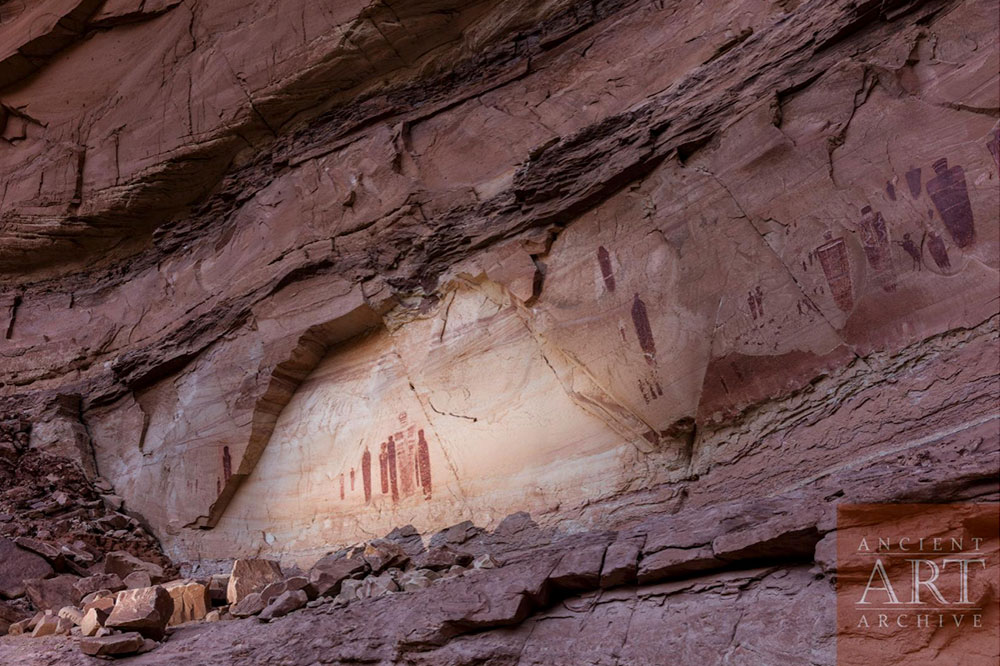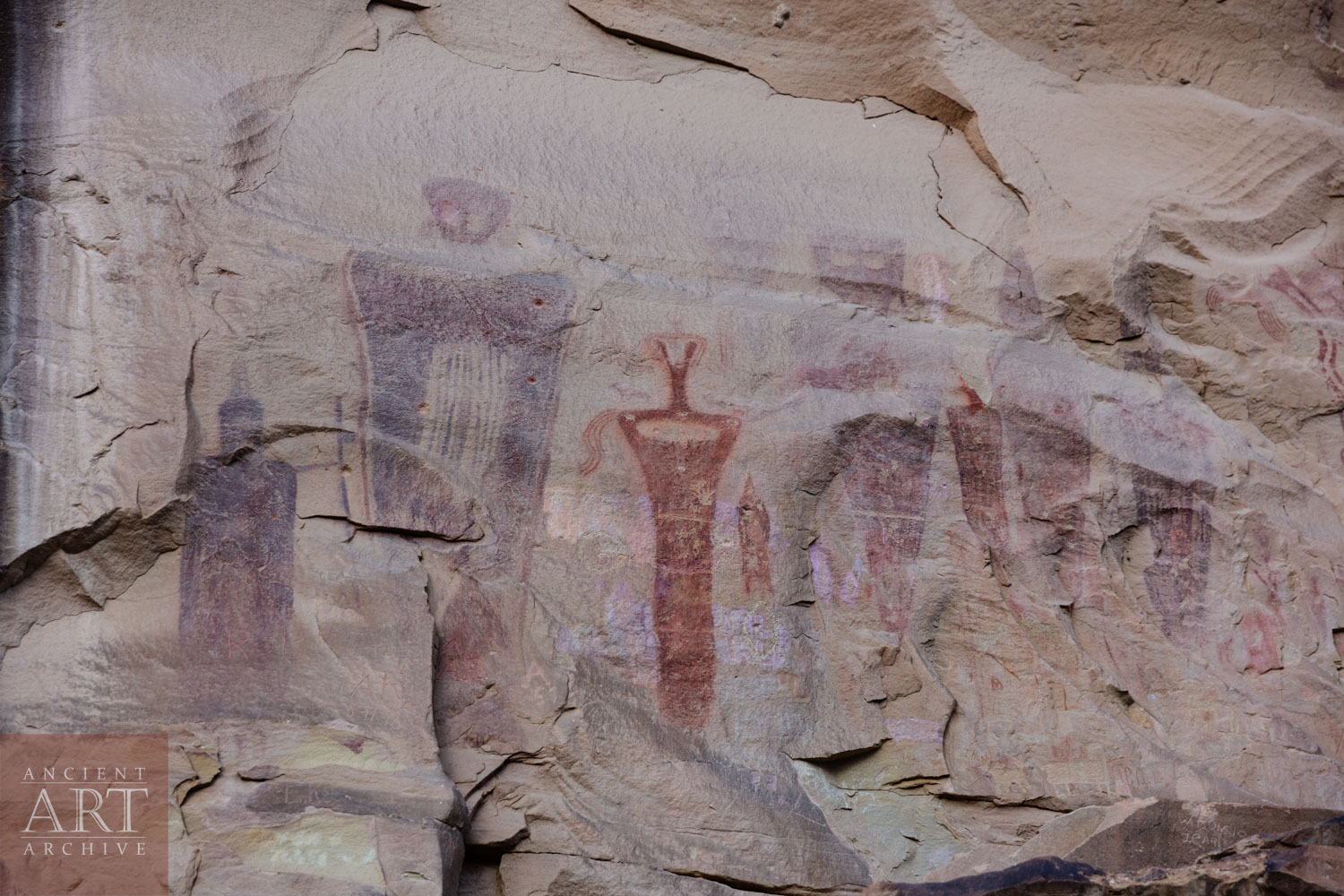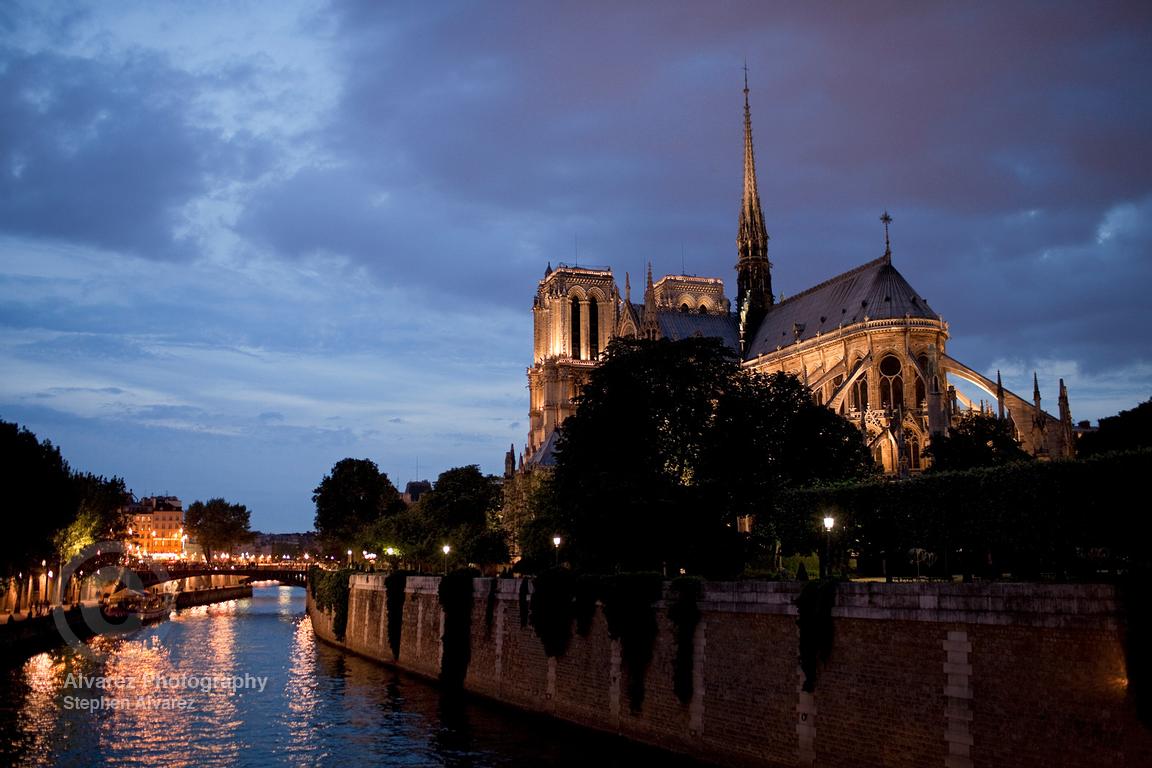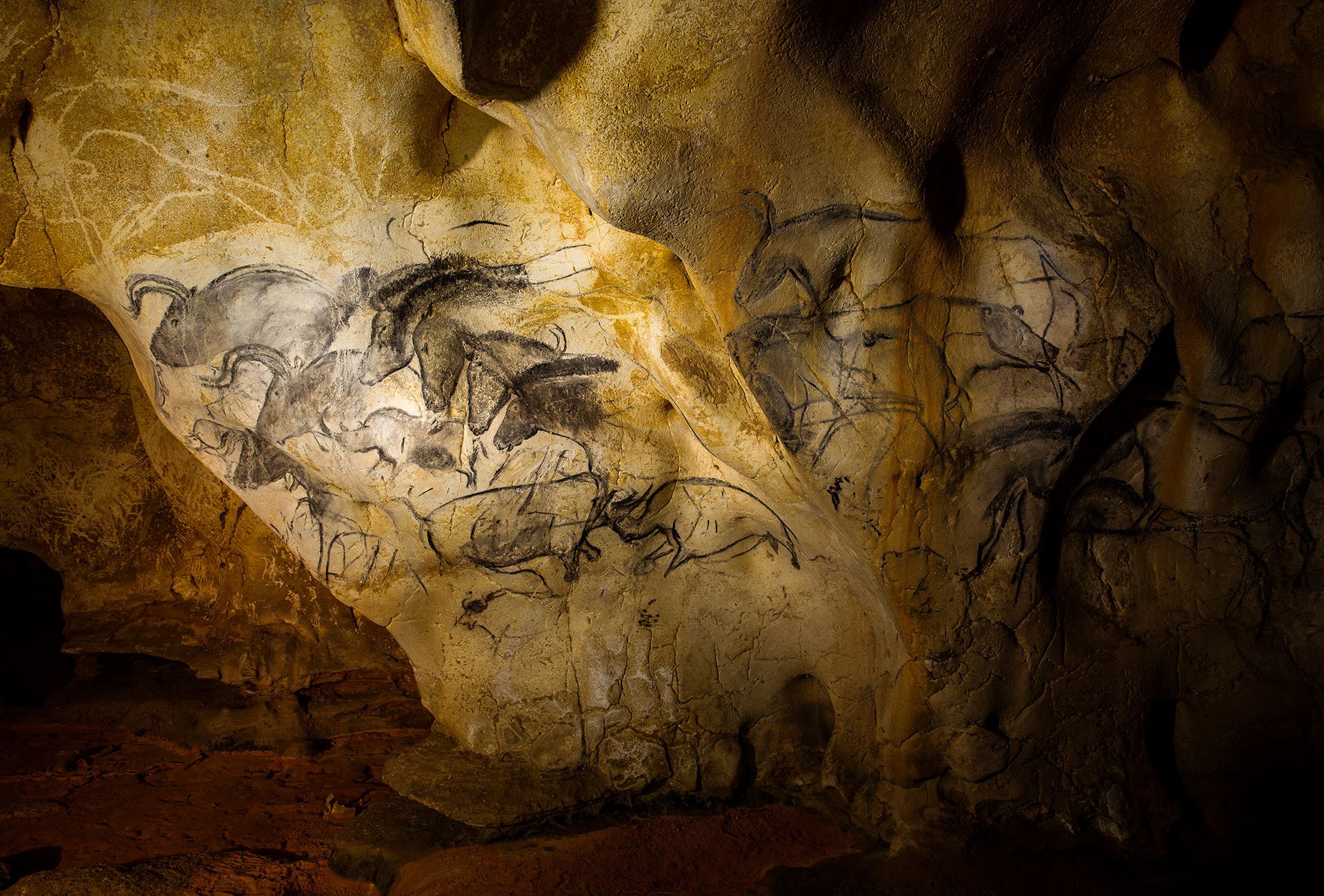The distinct artistic form known as the Barrier Canyon Style (BCS) stands as a remarkable representation of ancient rock art primarily found in Utah, notably concentrated within the San Rafael Swell and Canyonlands National Park. This unique style extends across a significant expanse of Utah and western Colorado, creating a profound mark on the landscape. Coined by Polly Schaafsma in “The Rock Art of Utah” (1971, revised 2002), this classification encompasses various sites, notably along Barrier Creek in the former Barrier Canyon, now known as Horseshoe Canyon.

A detail of the Great Gallery of Horseshoe Canyon photo by Stephen Alvarez
These awe-inspiring rock art panels showcase pictographs, intricate paintings embellishing rock surfaces, alongside a limited collection of petroglyphs—etched images within the stone—capturing the quintessential traits emblematic of the Barrier Canyon Style. Belonging to the archaic period, possibly the late archaic phase, these artistic expressions span an estimated time frame of 1500 to 4000 years. The unearthing of clay figurines resembling this stylistic tradition in Cowboy Cave has yielded radiocarbon dates exceeding 7000 years, hinting at an ancient lineage for this form of artistic expression.
 Often referred to as the Holy Ghost panel, these large anthropomorphic figures typify Barrier Canyon style rock art. Photography by Stephen Alvarez
Often referred to as the Holy Ghost panel, these large anthropomorphic figures typify Barrier Canyon style rock art. Photography by Stephen Alvarez
The heart of the Barrier Canyon Style lies within central Utah’s landscapes, prominently displayed in the rock art nestled within the San Rafael Swell and Canyonlands National Park. These mysterious depictions, potentially carrying profound spiritual significance, offer glimpses into the deep artistic language of a civilization lost in the annals of time.
 The “Carrot Man” site in Rio Blanco County, Colorado. Photograph by Stephen Alvarez
The “Carrot Man” site in Rio Blanco County, Colorado. Photograph by Stephen Alvarez
Yet, the preservation of these invaluable remnants of ancient artistry encounters persistent challenges from human vandalism and the relentless natural processes of deterioration. Therefore, the protection of these venerable cultural vestiges assumes paramount importance in safeguarding Utah’s rich and diverse heritage.
 Vandalism on a Barrier Canyon Style pictograph panel in Grand County, Utah. Photograph by Stephen Alvarez
Vandalism on a Barrier Canyon Style pictograph panel in Grand County, Utah. Photograph by Stephen Alvarez
As scholarly investigations delve deeper into the enigmatic nature of the Barrier Canyon Style, it becomes increasingly clear that these expansive rock arts provide invaluable insights into the ancient cultural fabric and artistic traditions of the region.
For information on how to visit the Great Gallery visit our International Public Art Site Recommendations and scroll to the Great Gallery.







